Philodendron Holtonianum – Rare Plant
Original price was: ₹8,500.00.₹4,647.78Current price is: ₹4,647.78.
1 in stock
Plant Size: Single well rooted same plant (5-7 leaves) mentioned in the last picture (Pot included)
Shipping: Free Shipping
If you’re looking for a beautiful, easy-to-care-for houseplant, look no further than the Philodendron Holtonianum. This plant is perfect for anyone who wants to add some greenery to their home but doesn’t have a lot of time to spend caring for it. In this blog post, we will discuss everything you need to know about this plant, from how to care for it to where you can find it. We’ll also give you some tips on how to make your Philodendron Holtonianum thrive!
What Does Philodendron Holtonianum Look Like?
Philodendron Holtonianum mature is very thinly coriaceous which means its leaf blades feel like very thin leather. This is just one of the many reasons why the plant has such a distinctive appearance. The Philodendron holtonianum is a very beautiful plant, and it is clear to see why it is so popular among plant collectors.
Where can I Buy Philodendron Holtonianum?
There are a few places that you can buy Philodendron Holtonianum. One option is to go to your local nursery or garden center and see if they have it in stock. If they don’t, you could try looking online at retailers that sell tropical plants. Another option would be to look for someone who specializes in Philodendron species and see if they have any Holtonianum for sale. Whichever route you decide to take, make sure that you’re getting the plant from a reputable source so that you can be assured of its quality.
Philodendron Holtonianum Other Features
Drought Tolerance
It is very drought tolerant. It can go for long periods of time without water and still look healthy.
Air Purification
It is at purifying the air. It removes toxins and pollutants from the air, making it healthier for you to breathe.
Maintenance
It is very low maintenance. It doesn’t require a lot of care, and they’re easy to take care of.
Toxicity
It is poisonous if ingested. If you have pets or small children, it is important to keep this in mind. Its leaves can cause skin irritation if they come into contact with your skin.
Dormancy
It enters a period of dormancy in the winter. This is normal, and they will resume growth in the spring. During these days, it’s important to not water the plant as much.
Philodendron Holtonianum Care
Philodendron Holtonianum care involves very little water. This plant is very drought tolerant, so you don’t need to water it very often. In fact, overwatering can be detrimental to the plant’s health. Allow the soil to dry out completely before watering again. This plant also doesn’t need a lot of light. It can tolerate low light conditions, making it perfect for rooms that don’t get a lot of sunlight. When it comes to fertilizer, less is more. This plant doesn’t need a lot of nutrients, so you don’t need to fertilize it very often. A light feeding once a month should be plenty.
Quick Guide
| Soil | Moist, well-drained |
| Light | Bright, indirect |
| Water | Allow to dry out between watering |
| Fertilizer | Monthly during the growing season |
| Humidity | Between 40-50% |
| Temperature | Between 65-85 degrees Fahrenheit |
| Pruning | As needed |
| Repotting | Every two years |
Soil
It prefers moist, well-drained soil. It is important to not let the plant sit in water, as this can cause root rot. The best way to water your plant is to water it thoroughly and then allow the soil to dry out completely before watering again.
Light
It prefers bright, indirect light. It can tolerate low light conditions, but it will not flower in these conditions. If you want your plant to flower, make sure it is getting enough light.
Watering
It should be allowed to dry out between watering. Water the plant thoroughly and then allow the soil to dry out completely before watering again.
Fertilizing
It should be fertilized monthly during the growing season. Use a balanced fertilizer and apply it according to the package directions.
Humidity
It prefers humidity between 40-50%. If the air in your home is too dry, you can mist the plant or set it on a pebble tray.
Temperature
It prefers temperatures between 65-85 degrees Fahrenheit. If the temperature in your home is too cold, you can move the plant to a warmer location.
Pruning
It should be pruned as needed. If the plant is getting too big, you can trim it back to keep it under control.
Repotting
It should be repotted every two years. When repotting, make sure to use a well-draining potting mix. Keep the plant in a pot that is only slightly larger than the current one.
How to Repot Philodendron Holtonianum?
It’s important to repot your Philodendron Holtonianum every two to three years. Here’s a step-by-step guide on how to do it:
- You’ll need to gather some supplies. You’ll need a new pot that’s about two inches wider than the current one, some fresh potting mix, and some pebbles or rocks.
- Next, you’ll need to gently remove your plant from its current pot. Be careful not to damage the roots.
- Once your plant is out of its pot, you can begin to add fresh potting mix to the new one. You’ll want to add enough so that the roots are covered, but not too much that the plant is sitting in water.
- After you’ve added the potting mix, you can begin to gently place your plant into the new pot. Once it’s in, you can add more potting mix around it and pat it down gently.
- Finally, you can add some pebbles or rocks around the base of the plant. This will help to keep the potting mix in place and prevent it from washing away.
And that’s it! You’ve successfully repotted your plant.
Philodendron Holtonianum Propagation
Philodendron Holtonianum can be propagated by stem cuttings or by dividing the root ball. To propagate by stem cutting, take a cutting that includes at least one leaf node and place it in moistened potting mix. Keep the cutting warm and humid until new growth appears. To propagate by division, carefully remove the plant from its pot and divide the root ball into smaller sections. Replant each section in its own pot filled with moistened potting mix. Keep the plants warm and humid until new growth appears.
Which propagation method you choose will depend on the size and health of your plant. If your plant is large and healthy, you can propagate by division. If your plant is small or not very vigorous, you can propagate by stem cuttings.
No matter which propagation method you choose, be sure to give your plant plenty of warmth and humidity until new growth appears.
Symptoms of Overwatering or Underwatering
If you think you may have overwatered or underwater Philodendron Holtonianum, look for these symptoms:
- Wilting leaves
- Yellowing leaves
- Browning leaves
- Drooping leaves
- Soft or mushy leaves
- Rotting roots
- Stunted growth
If you see any of these symptoms, adjust your watering schedule accordingly.
Remember, it’s better on the side of underwatering than to overwater. Too much water can kill your plant, but not enough water will only result in slower growth. Keep an eye on your plant and adjust as needed.
Common Problems with Philodendron Holtonianum
Philodendron Holtonianum is a beautiful plant that can add color and life to any home. However, like all plants, it can sometimes experience problems. Some common problems with it include yellowing leaves, brown spots on leaves, and wilting.
If you notice any of these problems with your plant, don’t worry! There are a few simple things you can do to help your plant get back on track.
Pests and Diseases
One of the most common problems with Philodendron Holtonianum or other similar plants such as Philodendron Inaequilaterum is pests. Common pests include mealybugs, aphids, and spider mites. These pests can cause yellowing leaves, brown spots on leaves, and wilting.
If you notice any of these problems with your Plant, check for pests. If you find any, you can remove them by hand or with a pesticide.
Another common problem with this plant is diseases. Common diseases include root rot and leaf spot. These diseases can cause yellowing leaves, brown spots on leaves, and wilting.
If you notice any of these problems with your plant, check for diseases. If you find any, you can treat them with a fungicide.
Tips for Caring for Philodendron Holtonianum Indoors
Philodendron Holtonianum is a beautiful, easy-to-grow houseplant that can thrive indoors with minimal care. Here are some tips for keeping your plant healthy and happy:
- Place your plant in a spot with bright, indirect light.
- Water your plant when the top inch of soil is dry.
- Feed your plant monthly, using a balanced houseplant fertilizer.
- Keep its leaves clean by wiping them down with a damp cloth.
By following these simple care tips, you can enjoy the beauty of this plant indoors for many years to come.
Philodendron Paloraense vs Holtonianum
If you are a fan of Philodendron plants, you may be wondering about the differences between Philodendron paloraense and Philodendron holtonianum. Both of these plants are beautiful and make great additions to any home or office. However, they do have some key differences. In this article, we will take a closer look at both plants and discuss the pros and cons of each. We will also help you decide which plant is right for you!
Leaves
One of the key differences between Philodendron paloraense and holtonianum is the shape of their leaves. Philodendron paloraense has narrow, lanceolate leaves that are arranged in a spiral pattern on the stem. In contrast, Philodendron holtonianum has glossy, tri-lobed leaves. The leaves of Philodendron holtonianum are also thicker and more leathery than those of Philodendron paloraense.
Flowers
Another key difference between these two plants is the flowers they produce. Philodendron paloraense has small, white or pale green flowers that bloom in the summer. Philodendron holtonianum, on the other hand, produces small, white flowers that bloom throughout the year.
Growth Habit
Philodendron paloraense is a medium-sized plant that typically grows to two and four feet tall. The plant has a woody stem and does not climb. Philodendron holtonianum, on the other hand, is a climbing plant that can grow up to several feet in length. The plant attaches itself to trees or other structures using aerial roots.
Care and Maintenance
Both Philodendron paloraense and holtonianum are easy to care for. The plants prefer warm temperatures and high humidity. They should be watered regularly, and the soil should be allowed to dry out between watering. These plants also need bright, indirect light. Fertilize your Philodendron plant every two weeks during the growing season with a balanced fertilizer.
So, which plant is right for you? If you are looking for a Philodendron plant that is easy to care for and does not require much maintenance, then Philodendron paloraense may be the best choice for you. If you are looking for a Philodendron plant that is a little more unusual, then Philodendron holtonianum may be the better option. Whichever plant you choose, you are sure to enjoy its beautiful flowers and lush foliage.
If you live in a small space, you may want to consider Philodendron paloraense. This plant does not climb and typically only grows to between two and four feet tall. If you have a little more space, or if you are looking for a climbing plant, then Philodendron holtonianum may be the better option for you. Whichever plant you choose, make sure to provide it with bright, indirect light and regular waterings. With a little love and care, your Philodendron plant will thrive!
Philodendron Holtonianum FAQs
Is Philodendron Holtonianum rare?
Yes, it is a rare plant. It’s a climber that requires well-draining soil, so it’s not often seen in gardens. However, its unusual shape and color make it a sought-after plant by collectors. If you’re lucky enough to find one, be sure to take good care of it!
How a Philodendron Holtonianum mature looks like?
This lovely tropical plant typically matures with an extensive root system and free-growing leaves that are 12 to 18 inches apart. The leaves are dark green and leathery, with a smooth texture. They can grow up to 3 feet long and 18 inches wide. In optimum conditions, it can live for many years.
Can we propagate Philodendron Holtonianum juvenline form?
It is possible to propagate Philodendron Holtonianum juvenile, but it can be difficult. The best way to do it is by rooting a stem cutting in water or moist soil. Make sure the cutting has at least two nodes and cut it from a healthy plant. Rooting will take several weeks, so be patient. Once the cutting has rooted, you can transplant it into potting soil.
Can we grow Philodendron Holtonianum outdoors?
Yes, it’s possible to grow this plant outdoors. However, it’s important to note that this plant is native to tropical rainforests, so it won’t do well in cooler climates. Make sure you provide your Holtonianum plant with plenty of direct sunlight and moist soil and protect it from frost. The recommended USDA hardiness zone for this plant is 11.
Final Thoughts
Philodendron Holtonianum is an excellent houseplant for anyone looking for something easy to care for. It’s also a great plant for those who want to add a touch of the tropics to their home. If you’re thinking about getting a Holtonianum plant, be sure to check out our care guide.
Only logged in customers who have purchased this product may leave a review.

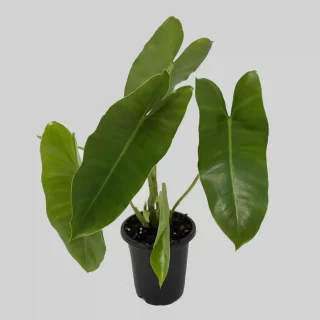


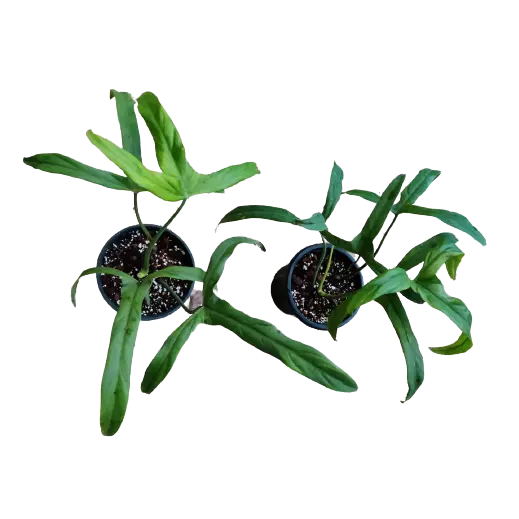

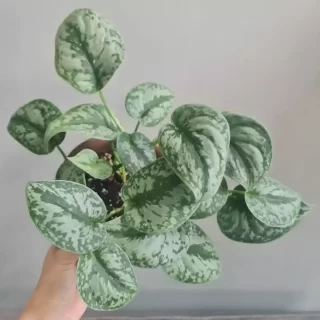
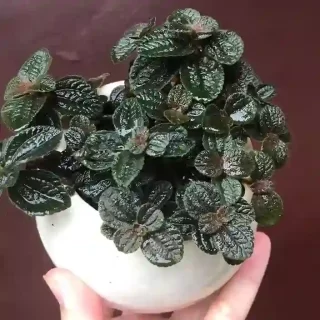
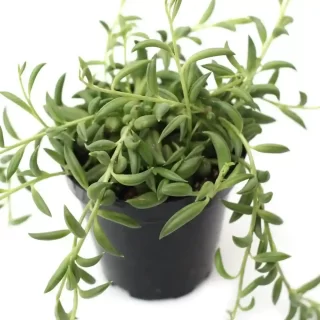
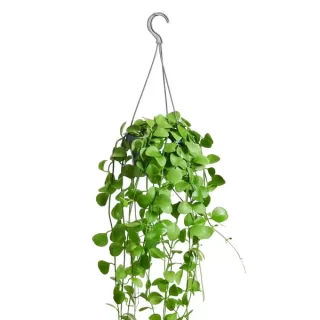
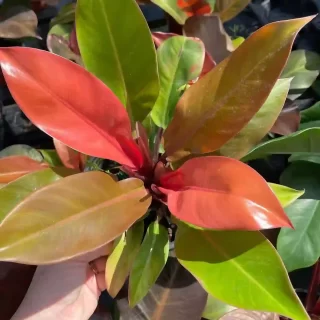
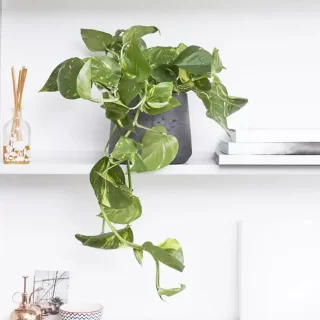
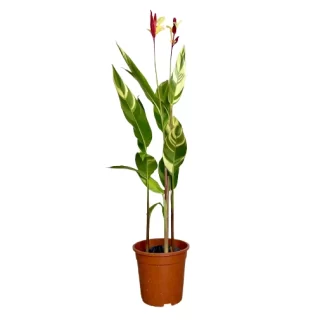
 If you need any assistance, I'm always here. Have you found what you were looking for?
If you need any assistance, I'm always here. Have you found what you were looking for?
Reviews
There are no reviews yet.